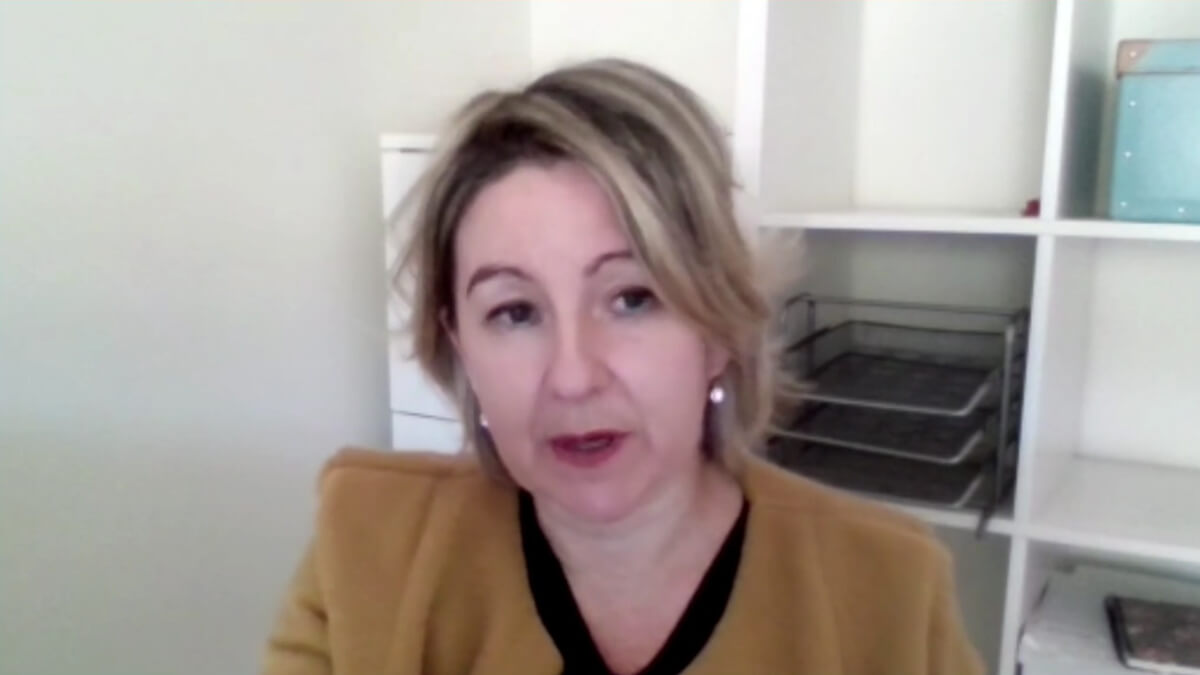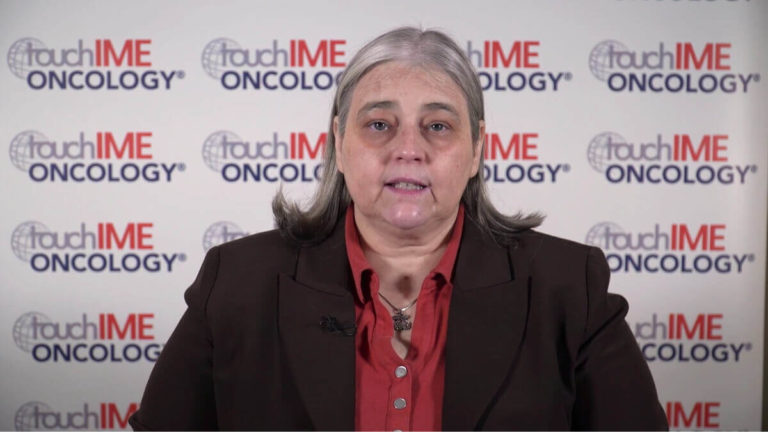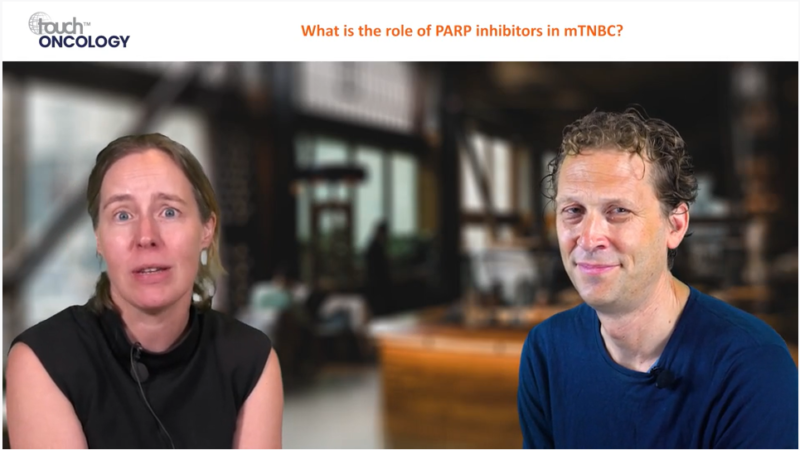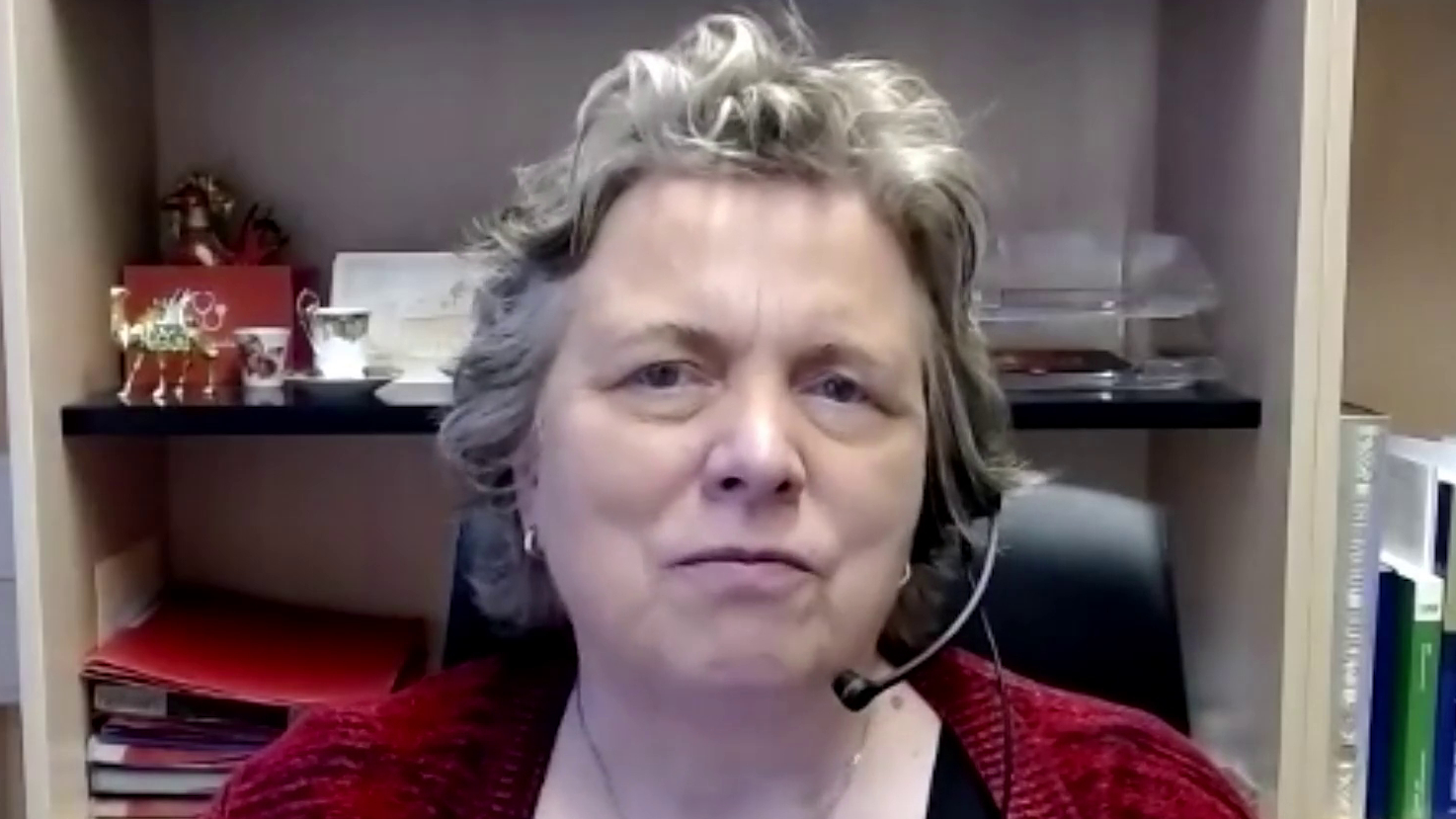touchPANEL DISCUSSION
 A visually engaging discussion designed to emulate a ‘live’ panel experience and provide clinicians with practical expert insights to address their clinical challenges. Useful tips below will show how to navigate the activity.
Close
A visually engaging discussion designed to emulate a ‘live’ panel experience and provide clinicians with practical expert insights to address their clinical challenges. Useful tips below will show how to navigate the activity.
Close
 A visually engaging discussion designed to emulate a ‘live’ panel experience and provide clinicians with practical expert insights to address their clinical challenges. Useful tips below will show how to navigate the activity.
Close
A visually engaging discussion designed to emulate a ‘live’ panel experience and provide clinicians with practical expert insights to address their clinical challenges. Useful tips below will show how to navigate the activity.
Close
New and emerging agents in HER2-negative metastatic breast cancer: Implications for current and future practice
- Downloads including slides are available for this activity in the Toolkit
Learning Objectives
After watching this activity, participants should be better able to:
- Discuss how novel treatments may be integrated into clinical practice for HER2-negative mBC, including optimal patient identification and treatment sequencing
- Identify considerations surrounding the use of ADCs and evaluate how safety management may support adherence in patients with HER2-negative mBC
- Evaluate the latest data for novel and emerging ADCs in managing HER2-negative mBC
Overview
In this activity, three oncology experts discuss the expanding targeted treatment options for human epidermal growth factor receptor 2 (HER2)-negative metastatic breast cancer (mBC), including optimal patient identification and treatment sequencing, before focusing on approved and emerging antibody–drug conjugates (ADCs) for HER2-negative mBC, including the latest efficacy and safety data and considerations for use in clinical practice. The discussion is guided by pre-canvassed questions provided by healthcare professionals involved in the management of patients with HER2-negative mBC.
This activity is jointly provided by USF Health and touchIME. read more
Target Audience
Oncologists, including breast cancer specialists involved in the management of HER2-negative mBC.
Disclosures
USF Health adheres to the Standards for Integrity and Independence in Accredited Continuing Education. All individuals in a position to influence content have disclosed to USF Health any financial relationship with an ineligible organization. USF Health has reviewed and mitigated all relevant financial relationships related to the content of the activity. The relevant relationships are listed below. All individuals not listed have no relevant financial relationships.
Faculty
Prof. Giuseppe Curigliano discloses: Advisory board or panel fees from AstraZeneca, Bristol Myers Squibb, Daiichi Sankyo, Eli Lilly, Gilead Sciences, Inc., Menarini, Merck & Co., Novartis, Pfizer, Roche, Seagen (all relationships terminated). Consultancy fees from AstraZeneca, Bristol Myers Squibb, Daiichi Sankyo, Eli Lilly, Gilead Sciences, Inc., Menarini, Merck & Co., Novartis, Pfizer, Roche, Seagen (all relationships terminated). Grants/research support from Merck & Co. Speakers bureau fees from Eli Lilly, Gilead Sciences, Inc. and Pfizer (all relationships terminated).
Prof. Hope Rugo discloses: Consultancy and advisory board fees from Daiichi Sankyo, Eisai, Mylan, Napo Pharmaceuticals and Puma Biotechnology. Grants/research support from Astellas Pharma, AstraZeneca, Daiichi Sankyo, Eli Lilly, Genentech, Gilead Sciences, Inc., GSK, Merck & Co., Novartis, OBI Pharma, Inc., Pfizer, Pionyr Immunotherapeutics, Roche, Sermonix Pharmaceuticals, Taiho Oncology, Inc. and Veru. Other financial or material support (royalties, patent, etc.) from AstraZeneca, Gilead Sciences, Inc. and Merck & Co.
Prof. Peter Schmid discloses: Advisory board or panel fees from AstraZeneca, Bayer, Boehringer Ingelheim, Celgene, Eisai, Merck & Co., Novartis, Pfizer, Puma Biotechnology and Roche. Consultancy fees from AstraZeneca, Bayer, Boehringer Ingelheim, Celgene, Eisai, Merck & Co., Novartis, Pfizer, Puma Biotechnology and Roche. Grants/research support from Astellas Pharma, AstraZeneca, Genentech, Medivation, Novartis, OncoGenex Pharmaceuticals and Roche.
Content reviewer
Danielle Walker, DNP, APRN, AGNP-C has no relevant financial relationships to disclose.
Touch Medical Contributors
Aniket Parikh and Katrina Lester have no financial interests/relationships or affiliations in relation to this activity.
USF Health Office of Continuing Professional Development and touchIME staff have no financial interests/relationships or affiliations in relation to this activity.
Requirements for Successful Completion
In order to receive credit for this activity, participants must review the content and complete the post-test and evaluation form. Statements of credit are awarded upon successful completion of the post-test and evaluation form.
If you have questions regarding credit please contact cpdsupport@usf.edu.
Accreditations
Physicians
This activity has been planned and implemented in accordance with the accreditation requirements and policies of the Accreditation Council for Continuing Medical Education (ACCME) through a joint providership of USF Health and touchIME. USF Health is accredited by the ACCME to provide continuing medical education for physicians.
USF Health designates this enduring material for a maximum of 0.75 AMA PRA Category 1 CreditTM. Physicians should claim only the credit commensurate with the extent of their participation in the activity.
The European Union of Medical Specialists (UEMS) – European Accreditation Council for Continuing Medical Education (EACCME) has an agreement of mutual recognition of continuing medical education (CME) credit with the American Medical Association (AMA). European physicians interested in converting AMA PRA Category 1 CreditTM into European CME credit (ECMEC) should contact the UEMS (www.uems.eu).
Advanced Practice Providers
Physician Assistants may claim a maximum of 0.75 Category 1 credits for completing this activity. NCCPA accepts AMA PRA Category 1 CreditTM from organizations accredited by ACCME or a recognized state medical society.
The AANPCP accepts certificates of participation for educational activities approved for AMA PRA Category 1 CreditTM by ACCME-accredited providers. APRNs who participate will receive a certificate of completion commensurate with the extent of their participation.
Date of original release: 14 August 2023. Date credits expire: 14 August 2024.
If you have any questions regarding credit please contact cpdsupport@usf.edu.
To obtain the CE/CME credit(s) from this activity, please complete this post-activity test.
Claim Credit- Downloads including slides are available for this activity in the Toolkit
You may also be interested in...

REGISTER NOW FOR FREE ACCESS TO
- 1000+ topical and insightful peer-reviewed journal articles
- 100+ hours of bite-sized congress highlights
- 9 major therapy areas packed with the latest scientific advances
- 150+ specialties offering learn-on-the-go medical education
- + Concise email updates and newsletters so you never miss out





















